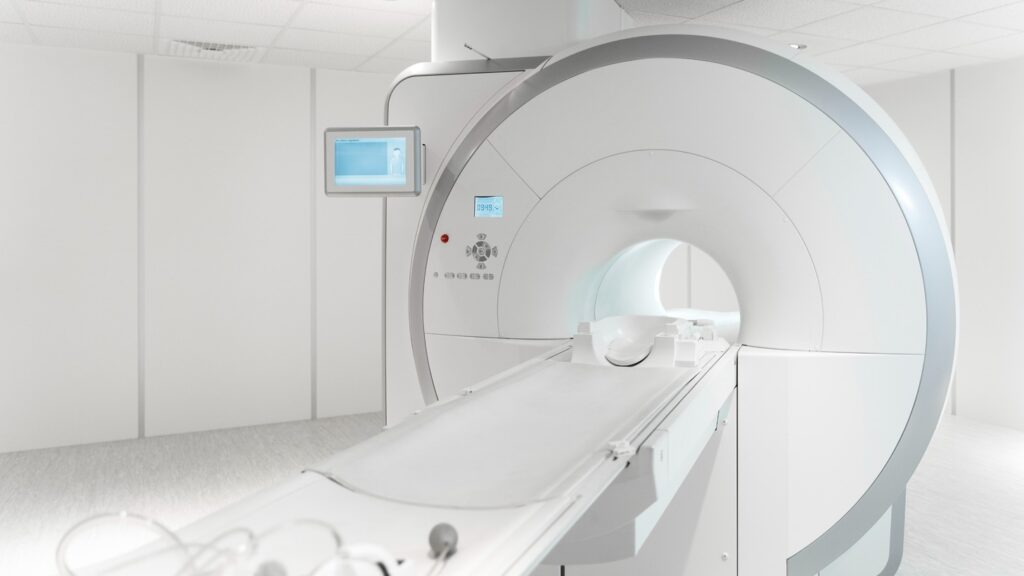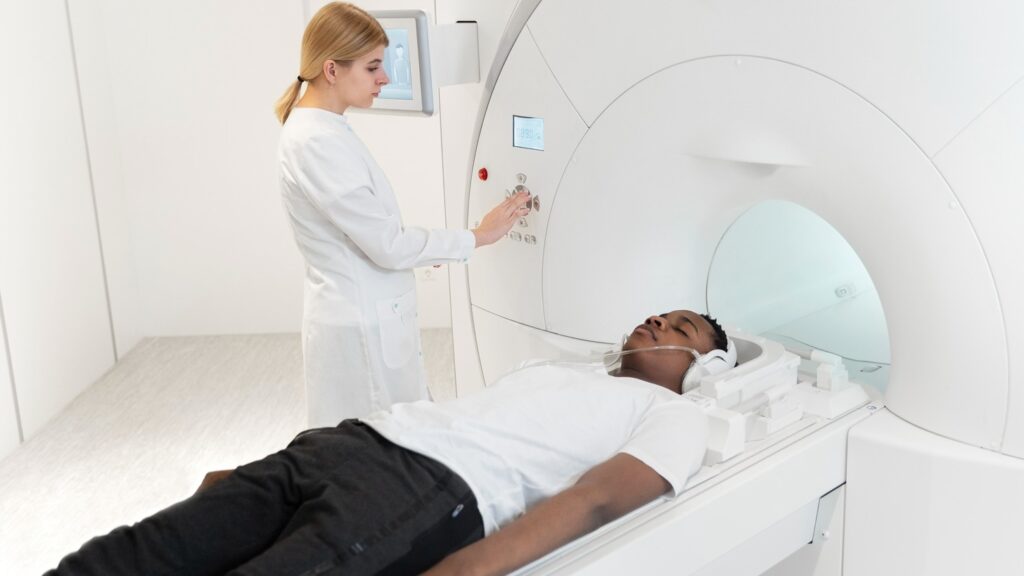
When you’re diagnosed with breast cancer, it can feel like there are too many choices. At Liv Hospital, we get it. We know finding the right treatment is key. Innovative treatments are now available, aiming for accuracy and less harm to healthy areas.
If you’re looking for alternatives to radiation therapy, you’re not alone. We’ll dive into options like proton therapy and more. Our aim is to help you understand your choices, so you can decide what’s best for you.

Traditional radiation therapy is a key part of breast cancer treatment. Yet, it has its own set of challenges and limitations. We will look into how it works, its side effects, and why some patients look for other options.
Conventional radiation therapy, or external beam radiation therapy, uses high-energy beams to kill cancer cells in the breast. This treatment is given daily for several weeks. The goal is to harm cancer cells while protecting healthy tissues.
The process requires careful planning and precise delivery. This ensures the treatment is effective.
While it works, traditional radiation therapy can cause side effects. These include:
These side effects can affect a patient’s quality of life. Understanding these outcomes is key for making informed treatment decisions.
Some patients look for alternative treatments due to the side effects and limitations of traditional radiation therapy. Alternatives like proton therapy, brachytherapy, and other new treatments are being explored. They aim to reduce side effects while keeping treatment effective.

Women with breast cancer can benefit from proton therapy. It’s a precise treatment that reduces damage to healthy tissues. This method uses protons to target cancer cells, making it effective and precise.
Proton therapy is different from traditional radiation. It doesn’t use X-rays that can harm healthy tissues. Instead, it uses protons that stop at the tumor, focusing the energy on cancer cells.
Proton therapy has many benefits for breast cancer patients. It reduces the risk of damage to the heart and other tissues. Studies show it can lower the risk of heart problems by up to 45% compared to traditional radiation.
Proton therapy is precise, reducing radiation exposure to the heart and tissues. This is key for breast cancer patients, as it lowers the risk of long-term heart problems. A study found proton therapy significantly lowers radiation to the heart and lungs compared to traditional therapy.
| Treatment | Average Heart Dose | Average Lung Dose |
|---|---|---|
| Proton Therapy | 0.5 Gy | 2.1 Gy |
| Traditional Radiation | 2.3 Gy | 5.5 Gy |
Top cancer centers like Fred Hutch offer proton therapy for breast cancer. These centers have the latest proton therapy technology. Patients should talk to their healthcare team to see if proton therapy is right for them.
Looking for a different way to fight cancer? Brachytherapy is a new approach that uses internal radiation. It places a radioactive material right next to the tumor. This method is precise and targets the tumor directly.
Brachytherapy, or internal radiation therapy, uses a tiny device or seed. It’s filled with a small amount of radioactive material. This device is placed inside or near the tumor.
This method gives high doses of radiation to the tumor. It does this while keeping healthy tissues safe.
“Brachytherapy is a great option for breast cancer,” a radiation oncologist. “It can lead to fewer side effects and a shorter treatment time than traditional radiation therapy.”
There are different types of brachytherapy for breast cancer:
Brachytherapy is best for early-stage breast cancer patients after a lumpectomy. It’s for those with small tumors and no cancer in the lymph nodes. Research shows it works as well as whole-breast irradiation for local control and looks.
Every patient is different, and brachytherapy works differently for everyone. But for many, it’s a good choice. It can lead to great results with fewer side effects.
IORT is a big step forward in treating breast cancer. It lets doctors give a single dose of radiation during surgery. This method could make treatment faster and lessen side effects.
During IORT, a special device gives a focused dose of radiation to the tumor or nearby tissue. This is done while the patient is in the operating room. It makes sure the radiation hits the right spot, protecting healthy tissues.
IORT is often used with surgery, like lumpectomy or mastectomy. The radiation oncologist and the surgical team work together. They make sure the radiation is given safely and accurately.
IORT’s main perk is it’s a one-time treatment. Patients can finish their radiation in just one session. This is different from traditional external beam radiation therapy (EBRT), which needs many sessions.
Reduced treatment time is a big plus. It means patients can heal faster and get back to their lives sooner. IORT also might lower the risk of radiation harming healthy tissues, as it targets the tumor directly.
Not every breast cancer patient can have IORT. Doctors look at several things, like the cancer’s stage and size, and the patient’s health.
Those with early-stage breast cancer and small tumors might be good for IORT. But, each case is different. The choice to use IORT depends on the patient’s specific needs and medical history.
Stereotactic Body Radiation Therapy (SBRT) is a targeted radiation therapy for breast cancer. It sends precise, high doses of radiation right to the tumor. This way, it protects the healthy tissues around it.
SBRT uses advanced imaging to hit the tumor exactly. This ensures the radiation goes where it’s needed most. It’s key to avoiding damage to nearby organs and tissues.
Key aspects of SBRT’s precision include:
SBRT’s big plus is its short treatment time. Unlike old-school radiation therapy, which takes weeks, SBRT can finish in just a few visits. This makes it easier for patients and cuts down treatment time.
The benefits of a shortened treatment schedule include:
SBRT is a strong contender for certain breast cancer types. It’s best for cancers that are small and haven’t spread far. The high dose of radiation it delivers can help control the tumor better.
SBRT is considered for:
For those with hormone receptor-positive breast cancer, hormone therapy is a promising choice. It’s a treatment that targets hormone receptors to slow cancer cell growth. This makes it a good alternative to radiation therapy.
Hormone therapy lowers hormone levels or blocks their action on cancer cells. Many breast cancers grow because of estrogen and progesterone. By targeting these receptors, hormone therapy can reduce cancer risk.
Mechanism of Action: It can block hormones from reaching cancer cells, lower hormone levels, or interfere with receptors.
There are many hormone therapy medications for hormone receptor-positive breast cancer. These include:
Hormone therapy might replace radiation for early-stage, hormone receptor-positive breast cancer. The choice depends on cancer stage, menopausal status, and health conditions.
Patient Selection: Hormone therapy is best for those with low-risk, hormone receptor-positive breast cancer. Age, tumor size, and cancer grade are key factors.
Understanding hormone therapy’s role in breast cancer treatment helps patients and doctors make better choices. As we look for radiation therapy alternatives, hormone therapy is a valuable option.
Targeted drug therapies and immunotherapy are new ways to fight breast cancer. They focus on cancer cells’ unique traits. This makes them more precise in battling the disease.
Targeted therapies aim at specific molecules in cancer cells. They block these molecules to slow cancer growth. For example, HER2-targeting drugs help patients with HER2-positive breast cancer a lot.
Some common targeted therapies include:
Immunotherapy boosts the immune system to fight cancer better. It’s new in breast cancer but shows promise, mainly in triple-negative breast cancer.
Some immunotherapy approaches include:
Targeted therapies and immunotherapy can be used with other treatments. This includes surgery, chemotherapy, and hormone therapy. This mix can lead to better treatment plans.
For instance, mixing targeted therapies with chemotherapy can make treatments more effective. Using immunotherapy with other treatments might also help some patients more.
We’re moving towards a future where these treatments are key in breast cancer care. By knowing a patient’s cancer well, we can make treatments more effective and reduce side effects.
Talking to your healthcare provider about non-radiation therapy options is key. It helps you make smart choices about your breast cancer treatment. Being involved in these talks ensures you get the best care for your situation.
When looking into non-radiation therapy, ask your oncologist these questions:
“Patients should ask questions and talk about their worries with their healthcare team. This conversation is key to finding the best treatment plan.”
“The success of treatment depends on the partnership between the patient and their healthcare team. By asking the right questions and understanding the options, patients can make choices that fit their needs and wishes.”
It’s important to know the goals and trade-offs of non-radiation therapy. Different treatments have different benefits, like fewer side effects or shorter times in treatment. But, they might not work as well or need more treatments.
| Treatment Option | Potential Benefits | Possible Trade-offs |
|---|---|---|
| Proton Therapy | Precise targeting, reduced damage to surrounding tissues | Limited availability, higher cost |
| Brachytherapy | Internal radiation, shorter treatment duration | Requires specialized equipment, higher initial cost |
| Hormone Therapy | Systemic treatment, can be used with other therapies | May have significant side effects, not for all breast cancers |
Knowing about insurance and access to non-radiation therapy is key. Many insurances cover these alternatives, but what’s covered can vary a lot. It depends on the treatment and your insurance plan.
Key considerations include:
By working closely with your healthcare team and asking the right questions, you can make informed choices about your breast cancer treatment. These choices should match your needs and preferences.
Alternatives include proton therapy, brachytherapy, intraoperative radiation therapy (IORT), and stereotactic body radiation therapy (SBRT). Hormone therapy, targeted drug therapies, and immunotherapy are also options.
Proton therapy is more precise, reducing heart and tissue risk. But, it’s not always better. It depends on the patient’s situation and treatment goals.
Brachytherapy places a small radioactive source in or near the tumor. It’s an internal therapy, used as an alternative to external radiation for some patients.
IORT delivers radiation directly to the tumor during surgery. This can reduce the need for more radiation and protect surrounding tissues.
Hormone therapy might be an option for hormone receptor-positive breast cancer patients. It depends on individual factors and treatment goals.
SBRT delivers precise, high-dose radiation in a short time. It has fewer side effects and a shorter treatment schedule.
Targeted drug therapies and immunotherapy target specific cancer cells. They offer alternatives to radiation therapy for some breast cancer patients.
Ask your oncologist about available alternatives. Discuss their benefits and risks. Find out how they fit your treatment goals and needs.
Coverage varies by treatment, insurance, and patient. Talk to your healthcare team about insurance and access.
Proton beam therapy uses protons to target and destroy cancer cells. It aims to reduce damage to surrounding tissues.
Proton therapy reduces heart and tissue risk. It’s a valuable alternative to traditional radiation for some patients.
Subscribe to our e-newsletter to stay informed about the latest innovations in the world of health and exclusive offers!
WhatsApp us